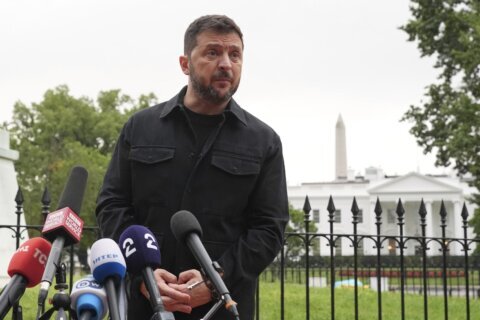WASHINGTON — Fears are growing that North Korea (DPRK) may soon have the ability to attach a nuclear warhead to a missile, launch it and hit a target on the western coast of the U.S.
Two intelligence sources told WTOP as recently as May 28, there are growing reasons to believe they may have reached the milestone, but there is no concrete proof.
South Korea’s (ROK) government sounded the alarm in a defense white paper on Jan. 6, 2015 saying, “The Ministry of National Defense (MND) assessed that North Korea’s nuclear weapon minimization has reached a substantial level, and it has a long-range missile that could be a threat to the continental U.S.”
“Minimization,” or miniaturization, in the field of nuclear weapons design is the process of reducing the size of a nuclear weapon until it is small enough to load on a missile.
On May 20, 2015 a spokesman for North Korea’s official Korean Central News Agency (KCNA) quoted the head of the National Defense Commission, who said they have long-since, “entered the stage of producing smaller nukes and diversifying them.”
U.S. National Security Council spokesman Patrick Ventrell, in a statement to WTOP on May 28, 2015, discounted North Korea’s nuclear weapons aptitude saying, “Our assessment of North Korea’s nuclear capabilities has not changed. We do not think that they have that capacity. However, they are working on developing a number of long range missiles, including intercontinental ballistic missiles that could eventually threaten our allies and the homeland.”
While there may be doubt about North Korea’s miniaturization capabilities, a top U.S. military official thinks they can do it.
Gen. Curtis Scaparrotti, Commander, U.S. Forces Korea, of the Army told reporters in Oct. 2014, “I believe they have the capability to miniaturize the device at this point and they have the technology to potentially actually deliver what they say they have.”
Scaparrotti said however, the chances of success were “low.”
If the North Koreans have succeeded in shrinking the size of a nuclear warhead, “it makes it far more likely those missiles they have, either under development, or in actual deployment could actually reach portions of U.S. soil and territory, because it’s less payload weight and it can go further,” said Dr. David Kay, Senior research fellow at the Potomac Institute for Policy Studies.
Anecdotal evidence appears to suggest that if they don’t have the capability already, it may not be long.
Shrinking a nuclear warhead small enough to load onto a missile, “is very difficult, but it’s not as difficult now as it was when the U.S. and the Soviet Union first did it. Computers have become more powerful and as with anything in science and technology, once someone has done it, you know it can be done,” said Kay.
In the four months since it’s pronouncement that it is able to shrink nuclear warheads, North Korea has openly threatened to attack the U.S. with nuclear weapons.
“I would find it hard to believe that North Korea would use a nuclear weapon to attack the U.S. or one of its allies, because they know that such an act would be suicidal and the consequences would be immense,” said Joseph Detrani, former North Korea Mission manager for the U.S. intelligence community.
Detrani believes North Korea is seeking to produce a miniaturized nuclear weapon and is boasting about the program as a means of using it as a deterrent to military action against it by western nations.
Recently, North Korea has produced and disseminated videos containing heated anti-U. S. rhetoric and boasted about nuclear accomplishments, but Ventrell said their ballistic missile developments, which threaten the U.S., “is why the Administration is working to improve regional and homeland missile defenses and continuing to work with the other members of the six party talks to bring North Korea back into compliance with its nonproliferation commitments.”
While developing a nuclear weapon that could reach the U.S. seems to be a prime goal of the regime of North Korean leader Kim Jong Un, intelligence sources tell WTOP, the greater risk at this point, appears to be North Korea’s willingness to sell nuclear weapons technology to rogue nations and independent actors.








